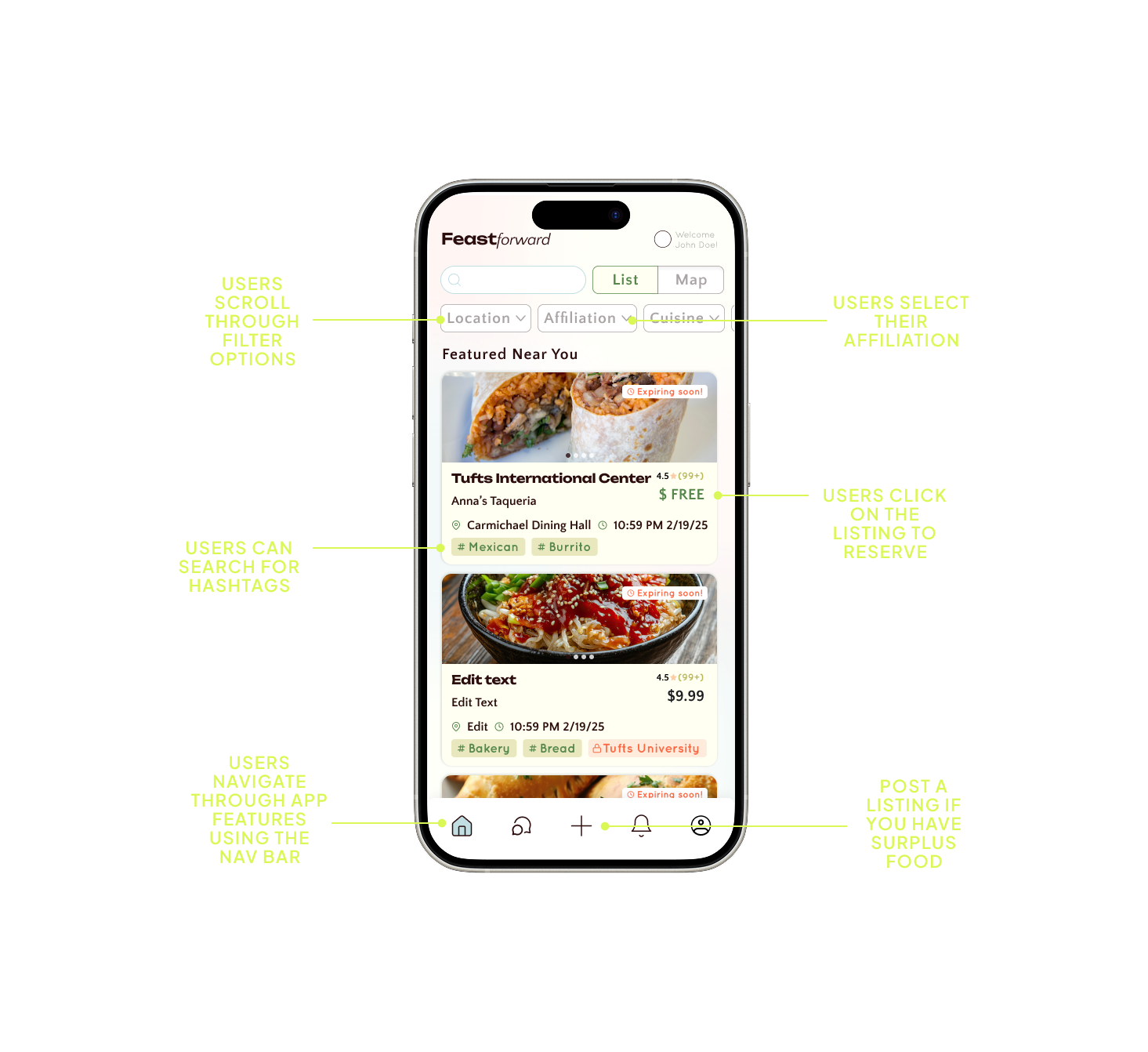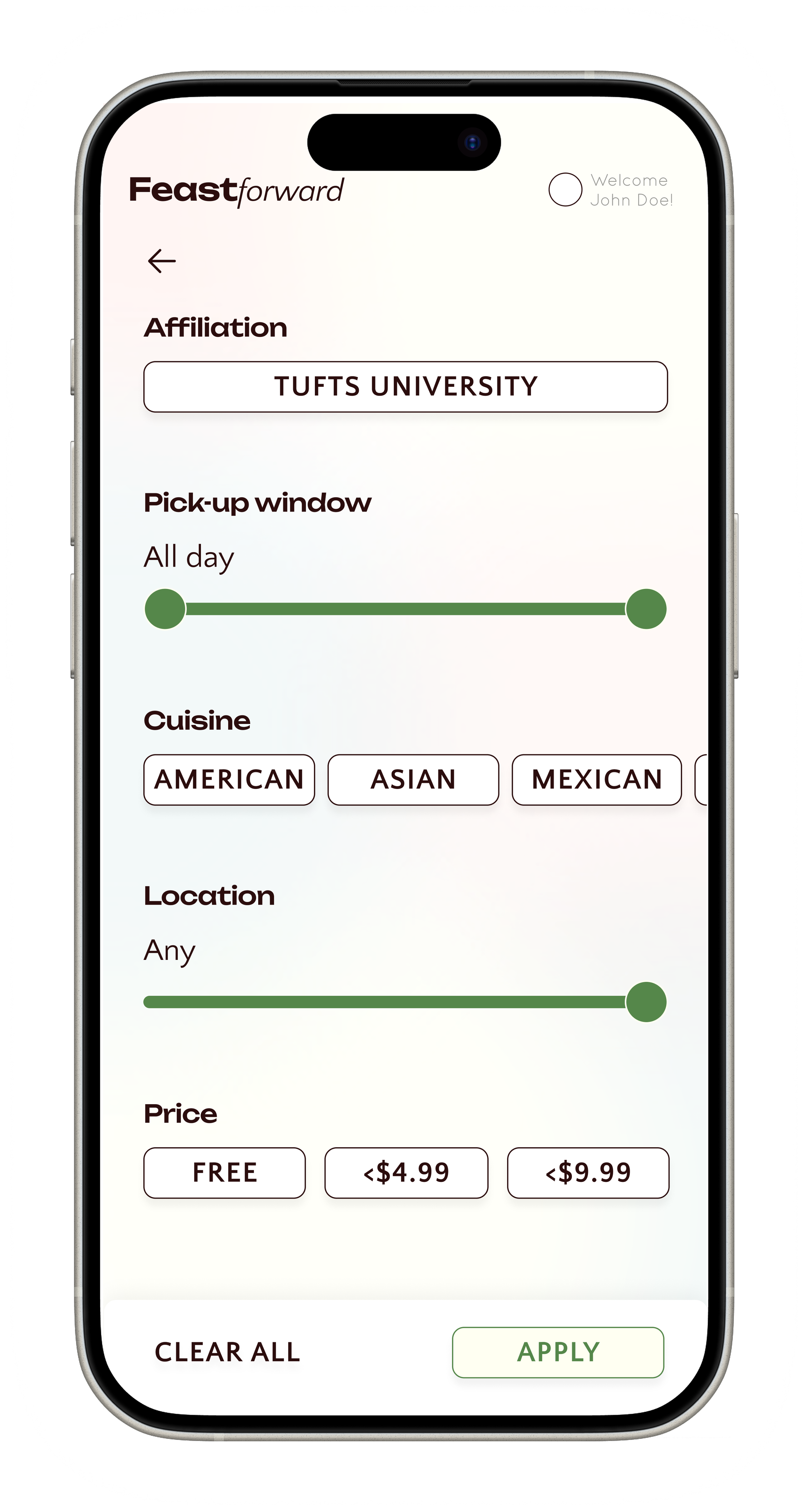Community Food Waste Reduction App
Project TypeCoursework: Tufts University
Feb 2024 - April 2024 (10 weeks)
TimeLineRoleUI/UX Designer
Figma, Excel, Adobe Illustrator, User Research Wireframes, Prototyping, Usability Testing
Tools and MethodsOverview
Every year, over 30% of food produced globally goes to waste, even as millions face food insecurity. On college campuses and within local communities, perfectly edible food from dining halls, events, and restaurants is often discarded at the end of the day.
Existing food-sharing apps such as Too Good To Go and Olio reduce waste but rarely target institutional or student-verified communities. This is the gap FeastForward aims to fill.
Problem
Existing food-sharing platforms like Too Good To Go and Olio help reduce waste but don’t address institution-specific ecosystems like universities. Departments, dining halls, and student groups often discard leftover food due to limited communication channels or restricted access.
Solution
Build a location-based, affiliation-verified system where users could both post and claim surplus food in order to reduce waste and food insecurity by supporting affordability and sustainability.
At A Glance
Filter Options
Users can explore nearby food resources or listings specific to their community, such as campus dining offers, local food banks, or meal programs, making it easy to find available food options in their area.
Post A listing
Sellers can quickly share surplus food by entering basic details: type, quantity, pickup time, and any eligibility limits. Listings automatically appear in eligible users’ feeds and stay visible until the pickup window ends or the seller marks them as unavailable.
Reserve
Sellers can quickly share surplus food by entering basic details: type, quantity, pickup time, and any eligibility limits. Listings automatically appear in eligible users’ feeds and stay visible until the pickup window ends or the seller marks them as unavailable.
Food Waste Tracking & Reservation Reminders
Sellers can quickly share surplus food by entering basic details: type, quantity, pickup time, and any eligibility limits. Listings automatically appear in eligible users’ feeds and stay visible until the pickup window ends or the seller marks them as unavailable.
Discover
To get a better sense of the food waste reduction app space, we started with some background research.







